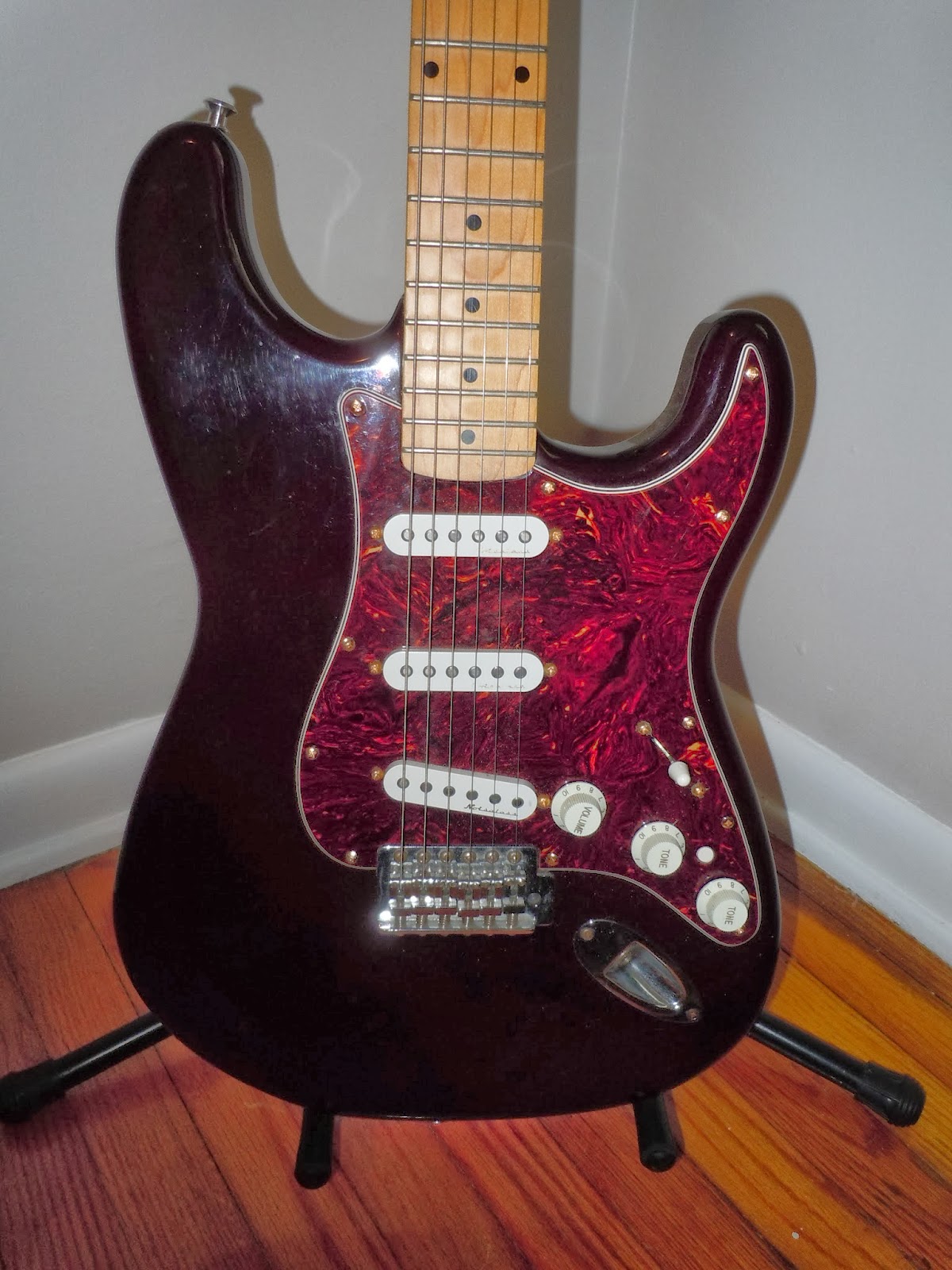 |
| Top: Vox Tonelab SE in flight case w/lid removed. Bottom: Vox Tonelab LE |
As a long time gigging musician in various cover band and original projects, I am always on the lookout for gear that allows me to approximate a range of amp tones and effects in a live setting without carrying an inordinate amount of gear. Multi-FX units seem to be all the rage currently for this purpose among local gigging musicians.
I first encountered the Vox Valvetronix line of gear several years ago, when I did a fill in gig for the second guitarist in a friend's cover band. My friend provided a Vox Valvetronix AD100VT head and 2X12 cabinet as backline for the gig. I was astonished at the remarkable tube-like "sag" and "push-pull" dynamics I was able to achieve with this set up and the impeccable quality and believability of each of the low gain amp models. My experience with (mostly digital) modeling amps prior to the Vox was that higher gain sounds were more believable, and that low and moderate gain vintage tube amp "breaking up" sounds were just not going to be achievable with what was available at that time.
Shortly after that experience, I bought the head I used at that gig and a Marshall 4X12 cabinet to accompany it. I used this for my live rig for a time with great success. Eventually, I sold this rig to get something easier to carry, and purchased a more manageable 160W Fender 2X12 combo to use with a few pedals.
Fast forward to 2016. I was working on a project where I needed a few different vintage tube amp tones: Tweed Fender, Blackface Fender, Vox AC30, Marshall Plexi, and Marshall JCM specifically. Using additional pedals to get all of these sounds proved cumbersome and expensive.
My friend then offered me a mint Vox ToneLab LE he was selling for $200. This seemed like an ideal solution-I already knew I liked the Vox Valvetronix line of gear, and I was already familiar with the basic operation. The LE was full of useful tones, fairly compact, and built like a tank.
I dialed in a patch for each of the amp tones/FX combos I needed, and programmed the control button to engage a solo boost in the form of a tube OD. I also configured the expression pedal for volume. Presto. I had the warm sounds I needed with believable tube "sag" and warmth.
I used this remarkably good sounding unit for several gigs before realizing it lacked a couple of features I really wanted. One feature was a channel A/B switch for each patch, so I could set up a clean or light crunch amp tone on "A" and a more high gain tone on the "B"channel. The second issue was that the single expression pedal meant that I had to choose between Volume and Wah, I didn't have the option with the LE for both.
At this point, fate intervened in the form of a ToneLab SE in a ATA approved flight case listed for sale on Craigslist that turned out to be a mere two blocks away from my house. The SE was the larger road-rugged version of the series and had the channel A/B feature I wanted as well as the extra expression pedal allowing for volume and wah to be used at the same time. The price was a reasonable $250 and I couldn't snap it up fast enough.
I began using the SE for my local and road gigs right away and immediately began to get compliments on my tone at the shows from other guitar players, They were all dumbfounded to discover I was using a ToneLab instead of some high end tube gear to get the sounds they were hearing.
My sounds are very simple. I use very basic mid gain amp tones with boosted midrange and high mid for presence and cut. I use a smidgen of Analog delay for thickness and classic spring reverb at about 40% "wet" on all of my patches. My usage of other effects is limited to the specific songs that require them-the gobs of that distinctive chorus on "Purple Rain" for example.
The things I love about the ToneLab are as follows:
1. Easy to program and understand because of actual tweakable knobs.
2. Very believable low gain vintage tube amp models with excellent tube-like dynamics
3. Rugged and reliable build quality
One very real downside is that the believability of the amp sounds diminishes noticeably on the higher gain styles of amp model. If you are a metal or hardcore player, this unit is not likely to work for you at all.
If you play any combination of Blues, Rock, Hard Rock, Country-you will very likely find usable and believable sounds in this unit. I know I did.













